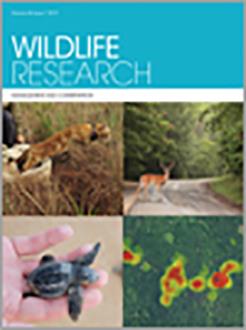Context. Feral pigs (Sus scrofa) are an increasing threat to agriculture and ecological communities globally. Although ground rooting is their most readily observable sign, feral pigs typically remain highly cryptic and their abundance and impacts are difficult to quantify.
Aims. The aim of the present study was to evaluate the effect of current feral pig population management practices (trapping, baiting, no feral pig management) on feral pig abundance and digging impacts, using a BACI (before–after control–impact) experimental design at a landscape scale.
Methods. A monitoring program was established to quantify both the abundance and digging impacts of feral pig populations within a temperate sclerophyll forest landscape using distance sampling. Transects were established across eight drinking water catchments where the whole catchment was the unit of replication for feral pig population management. Monitoring was carried out at 6-monthly intervals for 3 years, with no feral pig population management undertaken in the first year. In total, 367 feral pigs were trapped out of three catchments subject to trapping, and 26 were baited across two catchments subject to baiting with a commercial product (PIGOUT, Animal Control Technologies Australia, Melbourne, Vic., Australia). Three catchments were exempt from feral pig population management for the duration of this study.
Key results. Feral pig density within the overall study site was estimated as 1.127 pigs km–2, resulting in 4580 diggings km–2 year–1. There was no significant difference in feral pig density estimates observed among population management treatments or the treatment × year interaction term. An overall decrease in feral pig density across all catchments was attributed to extreme temperature and drought conditions experienced during the study.
Conclusions. Feral pig populations demonstrate high resilience to current feral pig population management practices in the present study. The annual volume of soil disturbed by the numbers of feral pigs estimated across this study area is comparable to a commercial-scale resource extraction industry. We did not find significant differences in feral pig digging density among dominant vegetation types, but larger digs were associated with swamp vegetation.
Implications. Current levels of feral pig population management did not reduce pig densities across eight catchments in the northern jarrah forest; therefore, more intensive population management is needed.






